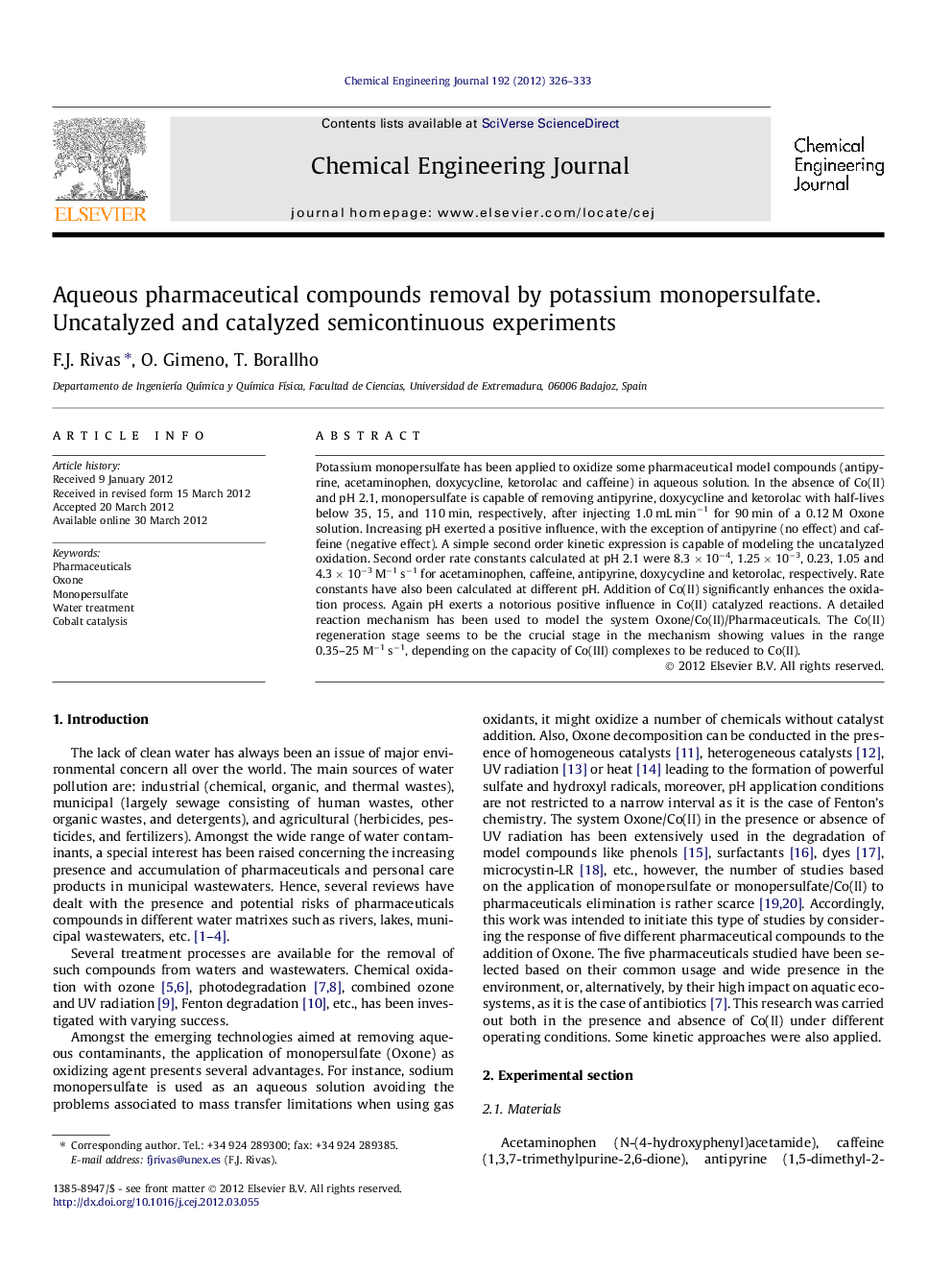| Article ID | Journal | Published Year | Pages | File Type |
|---|---|---|---|---|
| 149807 | Chemical Engineering Journal | 2012 | 8 Pages |
Potassium monopersulfate has been applied to oxidize some pharmaceutical model compounds (antipyrine, acetaminophen, doxycycline, ketorolac and caffeine) in aqueous solution. In the absence of Co(II) and pH 2.1, monopersulfate is capable of removing antipyrine, doxycycline and ketorolac with half-lives below 35, 15, and 110 min, respectively, after injecting 1.0 mL min−1 for 90 min of a 0.12 M Oxone solution. Increasing pH exerted a positive influence, with the exception of antipyrine (no effect) and caffeine (negative effect). A simple second order kinetic expression is capable of modeling the uncatalyzed oxidation. Second order rate constants calculated at pH 2.1 were 8.3 × 10−4, 1.25 × 10−3, 0.23, 1.05 and 4.3 × 10−3 M−1 s−1 for acetaminophen, caffeine, antipyrine, doxycycline and ketorolac, respectively. Rate constants have also been calculated at different pH. Addition of Co(II) significantly enhances the oxidation process. Again pH exerts a notorious positive influence in Co(II) catalyzed reactions. A detailed reaction mechanism has been used to model the system Oxone/Co(II)/Pharmaceuticals. The Co(II) regeneration stage seems to be the crucial stage in the mechanism showing values in the range 0.35–25 M−1 s−1, depending on the capacity of Co(III) complexes to be reduced to Co(II).
Graphical abstractFigure optionsDownload full-size imageDownload as PowerPoint slideHighlights► Use of Oxone in aqueous contaminant removal has been assessed. ► Second order rate constants Oxone-contaminant have been calculated. ► Homogeneous cobalt mediated catalysis significantly improves the oxidation rate. ► A detailed reaction mechanism is capable of simulating the process. ► Co(III) regeneration seems to be a crucial step in the system.
